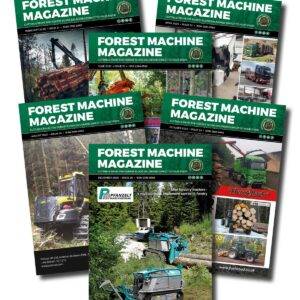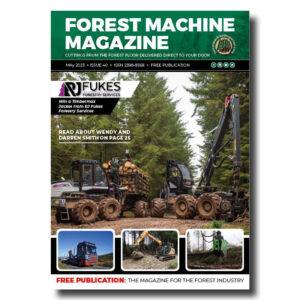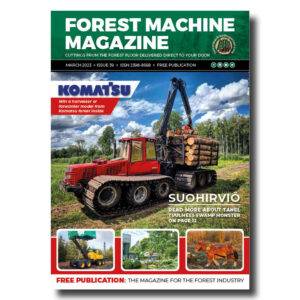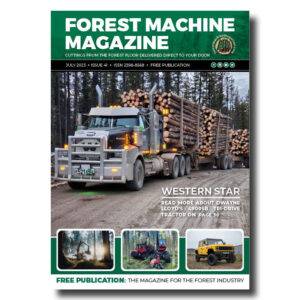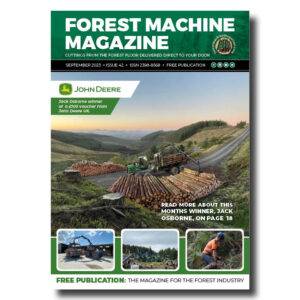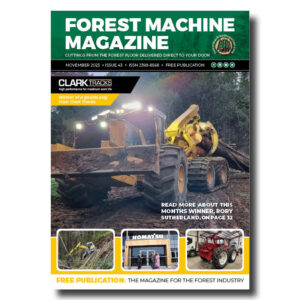Woodscaping By Joe Rankin
Dave Ireland has worked in the woods since he was a teen growing up in Howland. His dad and granddad were loggers. He started logging with a cable skidder full-time after graduating from high school in 1986 and in the late 1990s moved into mechanical harvesting. Now he’s doing a completely different kind of
logging. Some people might even say it’s not real
logging at all. But there is a word for it — “woodscaping.”
Woodscaping is a term that has been banging around for a while. Several state forestry departments, including Maine’s, have information sheets on the topic. Think of woodscaping as
landscaping for your wood-lot. You might equate the result with those perfectly manicured forests in Germany.
Woodscaping often focuses less on harvesting timber and more on the other things landowners say they want from their wood-lot — improved recreation opportunities, better wildlife habitat and a healthier forest. For the on-the-ground woodscaper that can
mean things like removing blow-downs, thinning unmerchantable stems to improve overall tree growth, battling invasive plants or putting in recreation trails.
Ireland’s company, Woodland Restoration, Inc., does all of those things and more. He works on and around Mt. Desert Island, including smaller islands, where landowners tend to be much more concerned about enhancing and preserving the visual appeal and value of their property than getting a few dollars from a timber sale. He charges by the hour. If there is any timber sold, the money goes to the landowner. “My average client is interested in aesthetics. No
timber value. Just clean-up,” he said.
Woodscaping is sort of where logging and landscaping intersect. You may be a woodscaper yourself. When you harvest low-grade wood for firewood, leaving the better trees to grow; or create a sugar-bush or create patch cuts for wildlife, or cut a walking trail.
“A lot of it goes on out of plain view and isn’t recognized as part of what people do in the woods,” said Morten Moesswilde, a Maine Forest Service district forester whose area includes several mid-coast counties. “Most of the time it doesn’t involve a logger or really sizable equipment or commercial timber harvesting. maybe a few logs here or there,”
-
That’s a remarkable amount of work hours for a single machine, the Norcar 600 owned by Erkki Rinne is taken well care of, it even has the original Diesel engine.
-
Kieran Anders is a forestry contractor working in the lake district. His work involves hand cutting and extracting timber using a skidder and tractor-trailer forwarder.
-
It is not possible to eliminate chain shot, but there are simple steps that can be taken to reduce the risk.
-
Arwel takes great pride in the fact that the mill has no waste whatsoever, “the peelings are used for children’s playgrounds, gardens and for farm animals in barns in the winter and the sawdust has multiple uses in gardens and farms as well.
-
Timber hauliers need to encourage young blood in, and also look after the hauliers we have, we need make the sector a safe and positive place to work.
FIND US ON
Related Posts
“Even with an emphasis on aesthetics it can really help the future growth and composition of the forest, especially in areas that have been high graded in the past,” said Moesswilde. “There are products that can result for the entrepreneurial – in addition to firewood, fence posts and rails, garden stakes, wreaths, wreath brush, ornamentals, syrup, birch bark, artisanal items like bentwood arbors and the like. Even a few logs can become benches, stools, tables, etc. A few landowners have begun donating surplus firewood from thinnings to local wood banks (at least in Waldo county) that provide emergency firewood to people in need of fuel.”
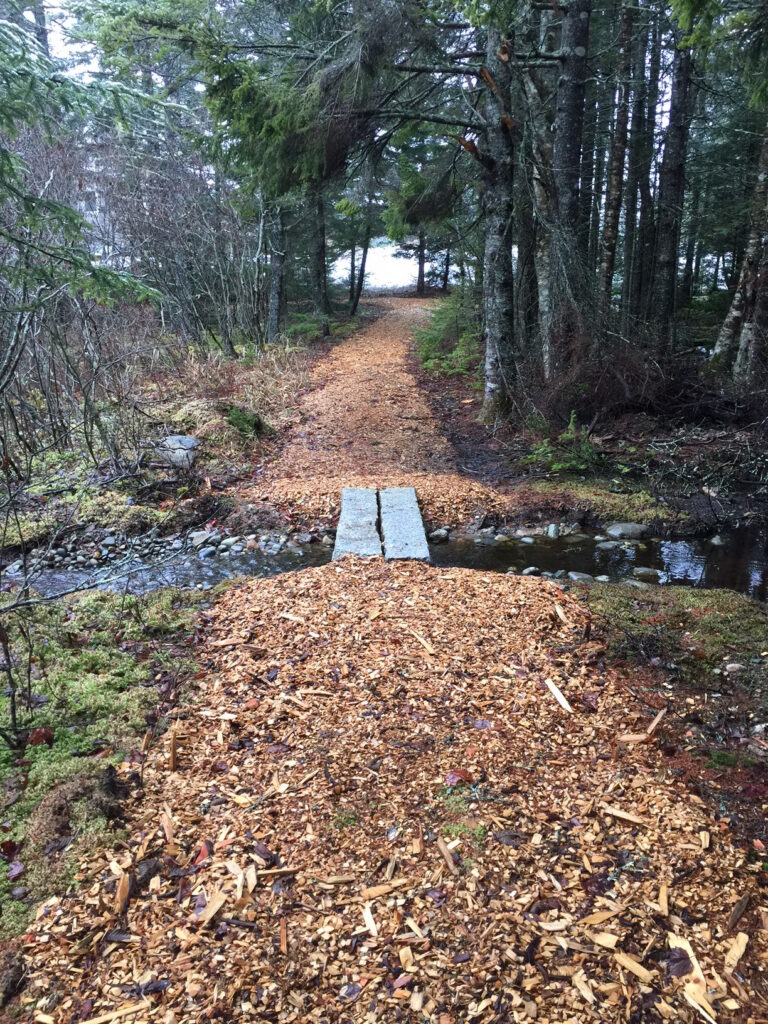

Dave Ireland has been doing woodscaping for eight years. He sold his cable skidder in the 1990s and got into mechanical harvesting. In 2009 he took a hard look at his life and work and decided he wanted something different. The economics of large-scale harvesting were changing — fuel prices were sky-rocketing and it was getting harder to sell logs.
“There was an emphasis on large volumes of wood, a lot of clear cutting. I wasn’t really into that,” Ireland said. “I wanted to reduce my carbon footprint.”
He sold his feller buncher and bought a Forcat (today called Oxtrac) mini track skidder. “Everybody told me I was crazy when I bought that little skidder. It fits in the back of a pickup truck,” he said.
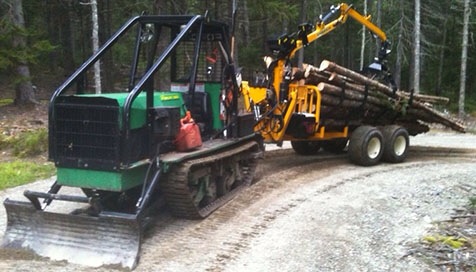



He began pitching his services to landowners with smaller parcels whose objectives didn’t focus on turning standing trees into cash, but were willing to pay out-of-pocket to get their woods looking good.
His big break came when he was hired by Rick Smith, a forester and MDI landowner, to clean up blow-downs on his property on the Latty Cove Road in Tremont, on the “quiet side” of the island. Then he created a walking trail. Three months later the job was finished and Smith threw a party to showcase the work. “I ended up getting work from everybody on that road,” Ireland said.
Ireland has a dozen regular clients and works pretty much all year. Summer is especially busy. He
employs two other guys. He now owns two mini-skidders with rubber tracks, a brace of mini-forwarders that can be towed by the skidders, a Kubota with a dump body and two tow-behind chippers. Low-grade wood, blow-downs and slash are chipped and spread on trails to provide a nice walking surface, he said.
Ireland points out that all of his equipment together cost way less than the $243,000 he paid for his first feller-buncher, and orders of magnitude less than the $400,000 or so you’d pay new for a similar machine now. And that carbon footprint? Well, let’s just say that it’s a fraction of what it was.
“I don’t harvest a lot of timber anymore. I had a market for biomass at Bucksport, but when that mill was closed that disappeared,” he said.
Ireland’s crew cleans up blow-downs, chips slash, cuts and mulches walking trails. He builds wildlife dens, installs birdhouses, does thinning of overstocked stands. One of the big benefits of his work, he said, is reducing wild fire danger. He has even broadened his services to include some traditional landscaping work, such as digging ponds and even mowing lawns. Most of the parcels he works on are small. The largest is about 75 acres. “I love it. I do think more timber should be harvested and more management should happen on these lots down here,” Ireland said. But wood markets aren’t all that good
these days, particularly those for low grade wood. And a land-owner paying $20,000, $40,000 or even $60,000 a year in property taxes, well, a few hundred bucks worth of wood chips isn’t a factor.
“That type of clientele is what you’d have to target to build a niche business like mine. You’ve got to hit those coastal towns where the real estate is worth a lot of money,” said Ireland.
Mount Desert Island, which has the highest property values in Maine, is ideal. But there are opportunities for building such a business in other coastal communities or really anywhere in the state “where the landowner demographics include less of a need for the wood-lot to pay for itself,” said Andrew Shultz, the landowner relations forester for the Maine Forest Service. Especially for established landscapers who already have a customer base and want to add woods work to their menu of services, Schultz said.
But Shultz cautions that many loggers might find it difficult to make the same shift Ireland did. “It’s a different type of work, different clientele, out there this isn’t really going to expand their business a whole lot,” he said. “Still, some entrepreneurial loggers and/or arborists, who can see themselves as service providers, may be able to blend these desired woodland outcomes with the value of the wood commodity products removed, and come up with a pricing strategy that’s viable.”


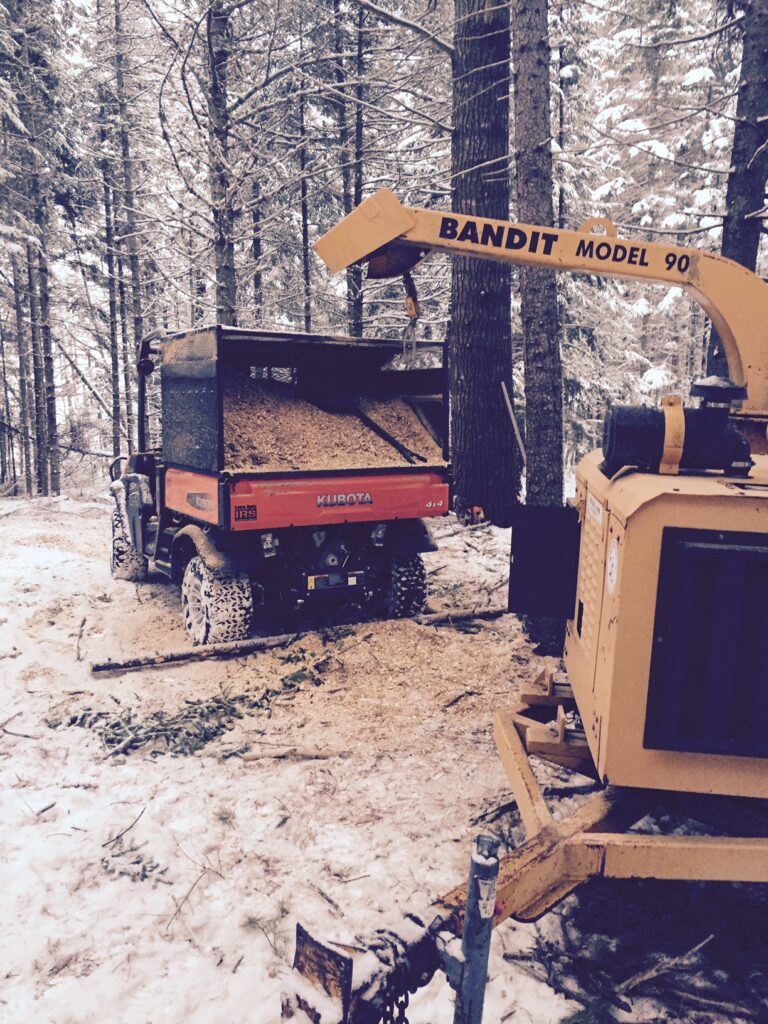

Moesswilde said over the last couple of years he’s met young people with degrees in environmental resource management who quiz him about the possibilities in woodscaping and low impact logging.
Ireland has another warning: it’s hard work. It’s not like sitting in the climate-controlled cab of a mechanical harvester, listening to tunes and working the joystick. “You’ve got to have the right equipment to do it, but 90 percent of it is physical labour. All the trees are harvested by hand, the slash is fed into the chipper by hand. It was kind of back to the old days of logging for me,” he said.
At the end of the day, or the end of the job, he’s glad he made the change he did. “I look around and actually feel happy and proud instead of thinking, ‘it’s going to be 100 years before we can touch this again,’“ he said.
This article featured in an early issue of Forest Machine Magazine and was written by Joe Rankin. Joe writes on forestry and nature and lives in Maine.


Forest Machine Magazine is written and edited by a forest professional with over 40 years hands on experience. We are dedicated to keeping you informed with all the latest news, views and reviews from our industry.
To support us you can subscribe to our bi-monthly magazine which is delivered to your door from only £15 per year.
Subscribe here
#homeoflogging #writtenbyloggersforloggers #loggingallovertheworld


